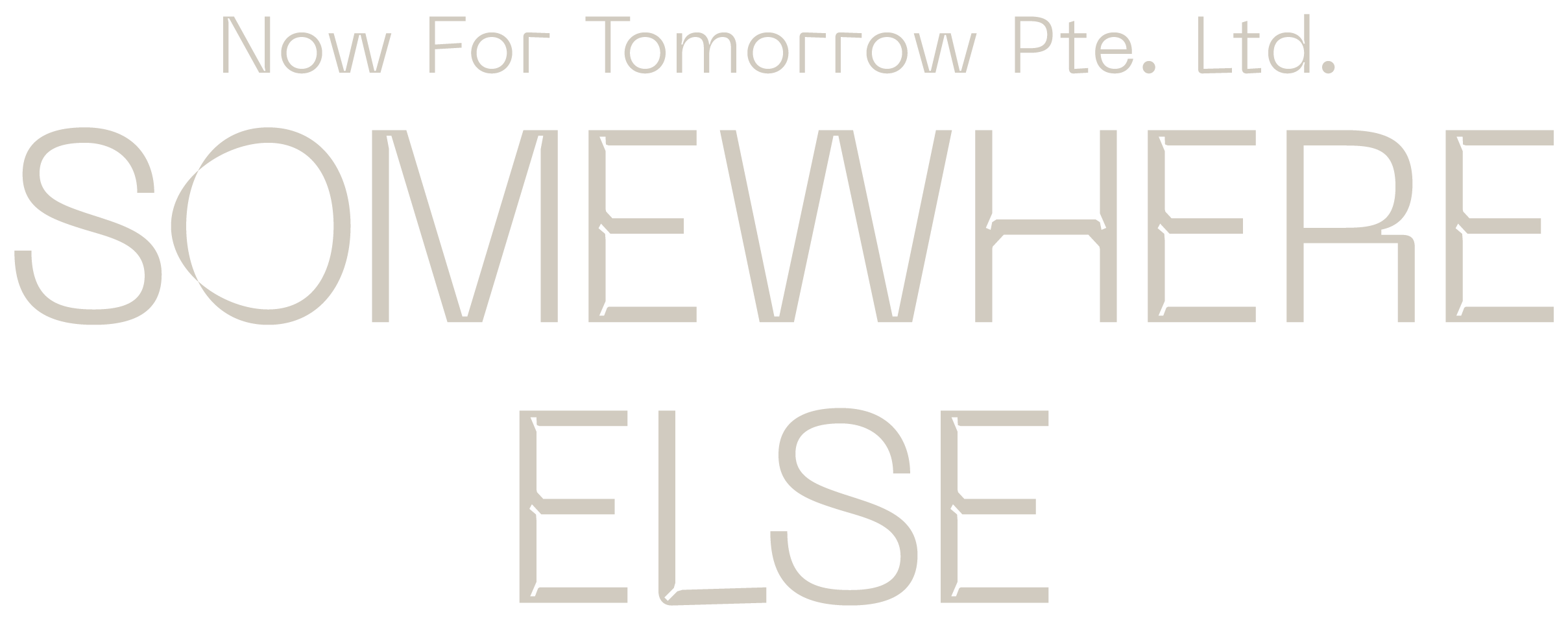A customer persona is a fictional portrait of a specific person, complete with fears, hopes, dreams, common experiences, and even a name.
WTF IS A PERSONA?

©Somewhere Else
Aka “Who’s buying my shit?”
Market research is broad. Differences between individuals are ironed out, until you’re left with faceless groups, identifiable only by their likelihood to purchase. Good market research uncovers revenue potential. It answers the question: “How many people would possibly buy my shit?”
A customer persona is… personal. It’s a fictional portrait of a specific person, complete with fears, hopes, dreams, and even a name (for example, Julie Tay.) Julie represents a section of your customer base. Julie is the answer to the question:“WHO is buying my shit?”
Julie is used as an empathy tool for the following:
1)Guiding messaging (What does Julie need to hear?)
2)Choosing channels (When and how can we reach Julie?)
3)Deciding on new features (Does Julie need or want this?)
4)Identifying opportunities (What else can we help Julie with?)
5)Identifying pitfalls (Where is Julie dropping out of the customer journey?)
6)Predicting behaviour (What would Julie do in this situation?)
By using Julie as a reference point, your business decisions take on a more human flavour.
How do I create a Customer Persona?
Since a customer persona is a detailed portrait of a person, demographics are a good place to start. Demographics form the skeleton of your persona. If you’ve already done your market research, you’ll have some idea of basics like:
1)Age
2)Gender
3)Income
4)Occupation
5)Household size
By itself, this data doesn’t say very much. It can’t tell you why customers might choose a competitor over you.
To your demographic skeleton, add psychographics. Psychographics are the muscles that make your skeleton useful. They’re made of psychological indicators such as:
1)Personality
2)Self-Image
3)Lifestyle
4)Opinions
5)Interests
6)Motivations
7)Frustrations
We now have a portrait that tells us what this person might look like / think / feel. But we still don’t yet know what a “day in the life” might look like.
Behaviour — The final bolt of lightning that brings your persona to life. What are some habits and patterns in your persona’s day-to-day life? These include:
1)Preferred marketing channels
2)Commonly used platforms
3)Purchasing patterns
4)Reaction patterns
Where do I get all this information from?
Surveys, interviews, and prolonged on-the-ground observation. To create an effective customer persona, you’ll need to really get to know your customers. The answers you get will only be as good as the questions you ask.
Don’t forget to name your persona!
︎BONUS QUESTION ︎
What if I don’t yet have any customers?
1)Decide who your ideal customer is
2)Interview friends, acquaintances or strangers who most fit the bill
3)Frankenstein a persona from there
4)Repeat when you do have real live customers
Market research is broad. Differences between individuals are ironed out, until you’re left with faceless groups, identifiable only by their likelihood to purchase. Good market research uncovers revenue potential. It answers the question: “How many people would possibly buy my shit?”
A customer persona is… personal. It’s a fictional portrait of a specific person, complete with fears, hopes, dreams, and even a name (for example, Julie Tay.) Julie represents a section of your customer base. Julie is the answer to the question:“WHO is buying my shit?”
Julie is used as an empathy tool for the following:
1)Guiding messaging (What does Julie need to hear?)
2)Choosing channels (When and how can we reach Julie?)
3)Deciding on new features (Does Julie need or want this?)
4)Identifying opportunities (What else can we help Julie with?)
5)Identifying pitfalls (Where is Julie dropping out of the customer journey?)
6)Predicting behaviour (What would Julie do in this situation?)
By using Julie as a reference point, your business decisions take on a more human flavour.
How do I create a Customer Persona?
Since a customer persona is a detailed portrait of a person, demographics are a good place to start. Demographics form the skeleton of your persona. If you’ve already done your market research, you’ll have some idea of basics like:
1)Age
2)Gender
3)Income
4)Occupation
5)Household size
By itself, this data doesn’t say very much. It can’t tell you why customers might choose a competitor over you.
To your demographic skeleton, add psychographics. Psychographics are the muscles that make your skeleton useful. They’re made of psychological indicators such as:
1)Personality
2)Self-Image
3)Lifestyle
4)Opinions
5)Interests
6)Motivations
7)Frustrations
We now have a portrait that tells us what this person might look like / think / feel. But we still don’t yet know what a “day in the life” might look like.
Behaviour — The final bolt of lightning that brings your persona to life. What are some habits and patterns in your persona’s day-to-day life? These include:
1)Preferred marketing channels
2)Commonly used platforms
3)Purchasing patterns
4)Reaction patterns
Where do I get all this information from?
Surveys, interviews, and prolonged on-the-ground observation. To create an effective customer persona, you’ll need to really get to know your customers. The answers you get will only be as good as the questions you ask.
Don’t forget to name your persona!
︎BONUS QUESTION ︎
What if I don’t yet have any customers?
1)Decide who your ideal customer is
2)Interview friends, acquaintances or strangers who most fit the bill
3)Frankenstein a persona from there
4)Repeat when you do have real live customers
This kit contains DIY branding solutions, customisable to your pace and
budget. Alternatively, request backup.
contact us︎
contact us︎




